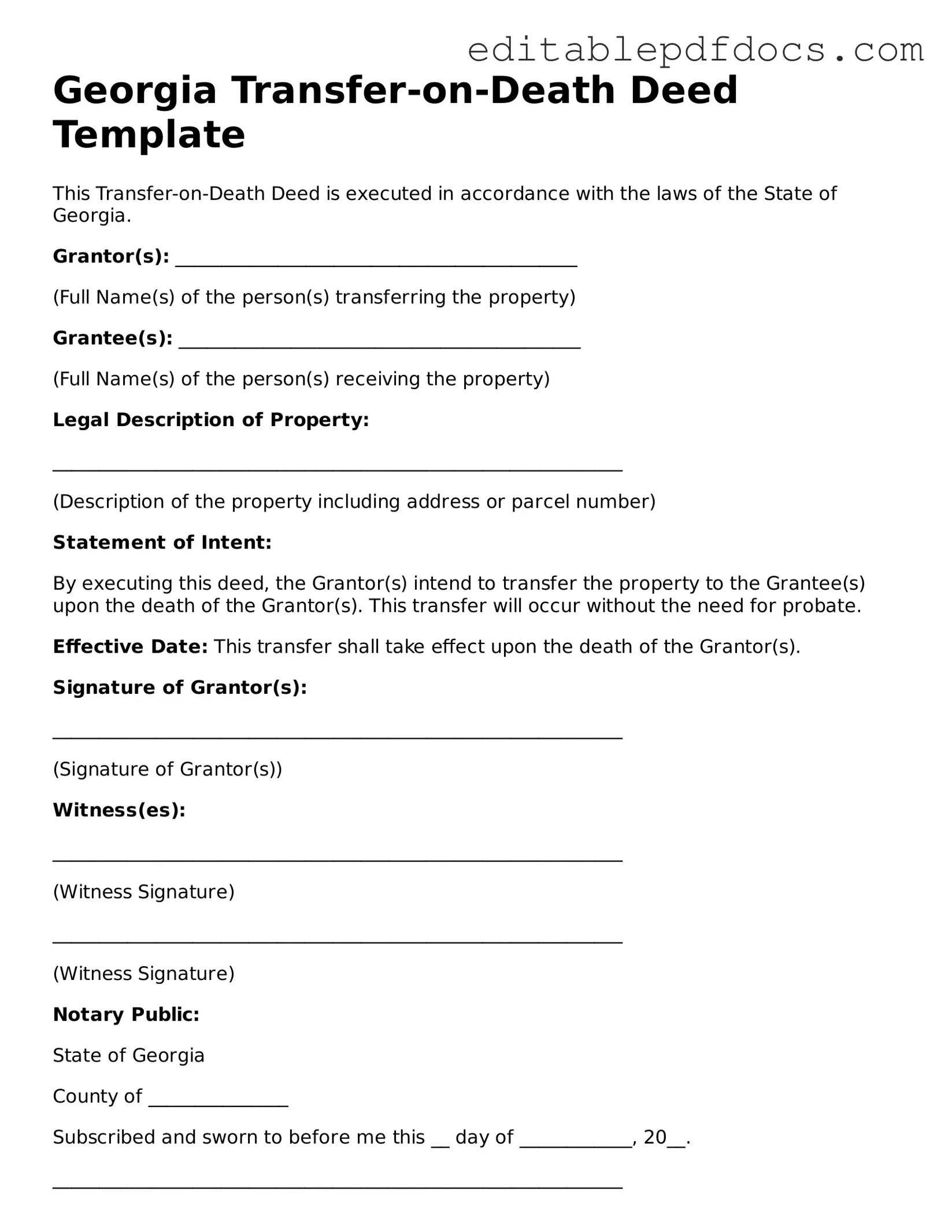Filling out a Georgia Transfer-on-Death Deed form can be straightforward, but many people make common mistakes that can lead to complications down the line. One frequent error is not including all required information. This form requires specific details about the property and the beneficiaries. Omitting even a small piece of information can render the deed invalid.
Another mistake involves incorrect property descriptions. The property must be clearly identified, including the address and legal description. Failing to provide accurate information can create confusion and may delay the transfer process.
People often overlook the need for signatures. Both the property owner and a witness must sign the deed for it to be valid. If either signature is missing, the deed may not be recognized by the court, which can lead to issues when trying to transfer ownership.
In addition, many forget to have the deed notarized. Notarization is a crucial step in the process. Without it, the deed may not be accepted by the county clerk's office, which can complicate matters when the time comes to transfer the property.
Another common oversight is failing to record the deed with the appropriate county office. After completing the form, it is essential to file it with the county where the property is located. If this step is skipped, the transfer may not be recognized, leaving beneficiaries without the intended property.
Some individuals mistakenly believe that the Transfer-on-Death Deed can be used for any type of property. However, this deed is only applicable to real estate. Using it for personal property or other assets can lead to confusion and potential legal issues.
Moreover, people sometimes choose beneficiaries without considering their financial situations. It’s important to think about how the transfer might impact the beneficiary’s finances or tax obligations. A little planning can save a lot of trouble later.
Additionally, many fail to update the deed after significant life changes, such as marriage or divorce. If the named beneficiary changes, it’s crucial to revise the deed accordingly. Otherwise, the original beneficiary may inherit the property, even if it no longer aligns with the owner's wishes.
Finally, some individuals do not seek legal advice when needed. While the form is designed to be user-friendly, consulting with a legal expert can help ensure that everything is filled out correctly. This can prevent costly mistakes and ensure that the transfer goes smoothly.
